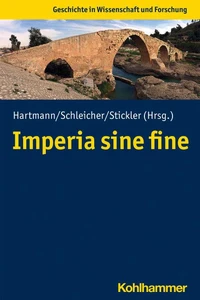Iberia Caucasica. Ein Kleinkönigreich im Spannungsfeld großer Imperien
Par : , , , ,Formats :
Disponible dans votre compte client Decitre ou Furet du Nord dès validation de votre commande. Le format PDF est :
- Compatible avec une lecture sur My Vivlio (smartphone, tablette, ordinateur)
- Compatible avec une lecture sur liseuses Vivlio
- Pour les liseuses autres que Vivlio, vous devez utiliser le logiciel Adobe Digital Edition. Non compatible avec la lecture sur les liseuses Kindle, Remarkable et Sony
 , qui est-ce ?
, qui est-ce ?Notre partenaire de plateforme de lecture numérique où vous retrouverez l'ensemble de vos ebooks gratuitement
Pour en savoir plus sur nos ebooks, consultez notre aide en ligne ici
- Nombre de pages644
- FormatPDF
- ISBN978-3-17-040121-1
- EAN9783170401211
- Date de parution11/08/2021
- Protection num.Digital Watermarking
- Taille126 Mo
- Infos supplémentairespdf
- ÉditeurKohlhammer
Résumé
In the course of the war against Mithridates VI of Pontus, the Romans advanced into the territories in the isthmus between the Black Sea and Caspian Sea in the first century BCE. In the central part of the region, south of the Greater Caucasus, lay the kingdom of Iberia (modern eastern Georgia), which thereafter became a target of attention for both Roman and Persian interests and was involved in the border policies of the two great empires.
Frank Schleicher provides an overview of the historical development of Iberia and the entire region, from the first contact with Rome to the Arab conquest in the seventh century, tracing social, cultural, and religious developments. Central to the presentation are the key questions of what role Iberia played in broader political relations between Rome and Persia, how it was culturally shaped by the two great empires, and what scope for action arose for its elites and rulers as a result of its particular geographical location.
Frank Schleicher provides an overview of the historical development of Iberia and the entire region, from the first contact with Rome to the Arab conquest in the seventh century, tracing social, cultural, and religious developments. Central to the presentation are the key questions of what role Iberia played in broader political relations between Rome and Persia, how it was culturally shaped by the two great empires, and what scope for action arose for its elites and rulers as a result of its particular geographical location.
In the course of the war against Mithridates VI of Pontus, the Romans advanced into the territories in the isthmus between the Black Sea and Caspian Sea in the first century BCE. In the central part of the region, south of the Greater Caucasus, lay the kingdom of Iberia (modern eastern Georgia), which thereafter became a target of attention for both Roman and Persian interests and was involved in the border policies of the two great empires.
Frank Schleicher provides an overview of the historical development of Iberia and the entire region, from the first contact with Rome to the Arab conquest in the seventh century, tracing social, cultural, and religious developments. Central to the presentation are the key questions of what role Iberia played in broader political relations between Rome and Persia, how it was culturally shaped by the two great empires, and what scope for action arose for its elites and rulers as a result of its particular geographical location.
Frank Schleicher provides an overview of the historical development of Iberia and the entire region, from the first contact with Rome to the Arab conquest in the seventh century, tracing social, cultural, and religious developments. Central to the presentation are the key questions of what role Iberia played in broader political relations between Rome and Persia, how it was culturally shaped by the two great empires, and what scope for action arose for its elites and rulers as a result of its particular geographical location.


